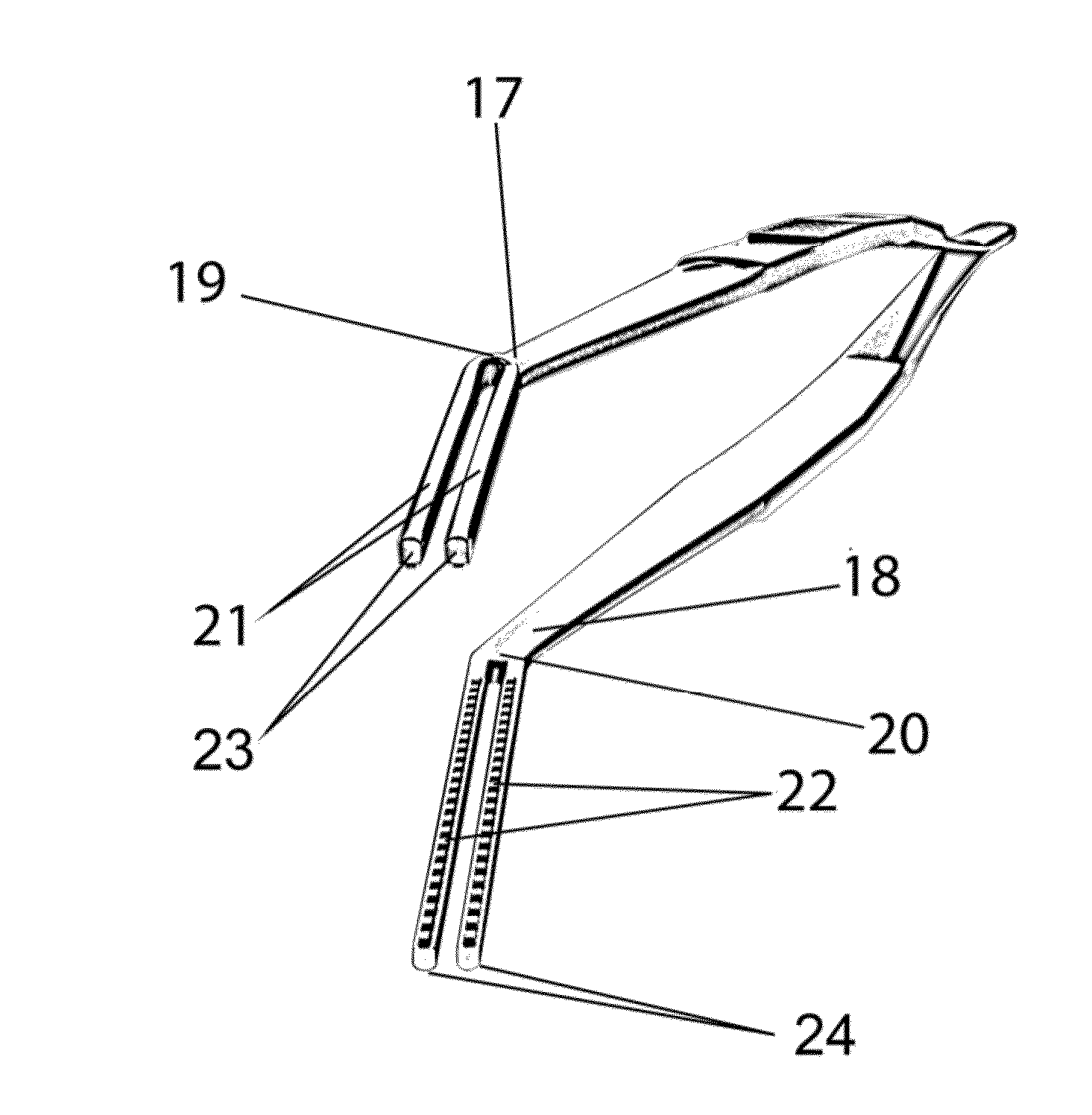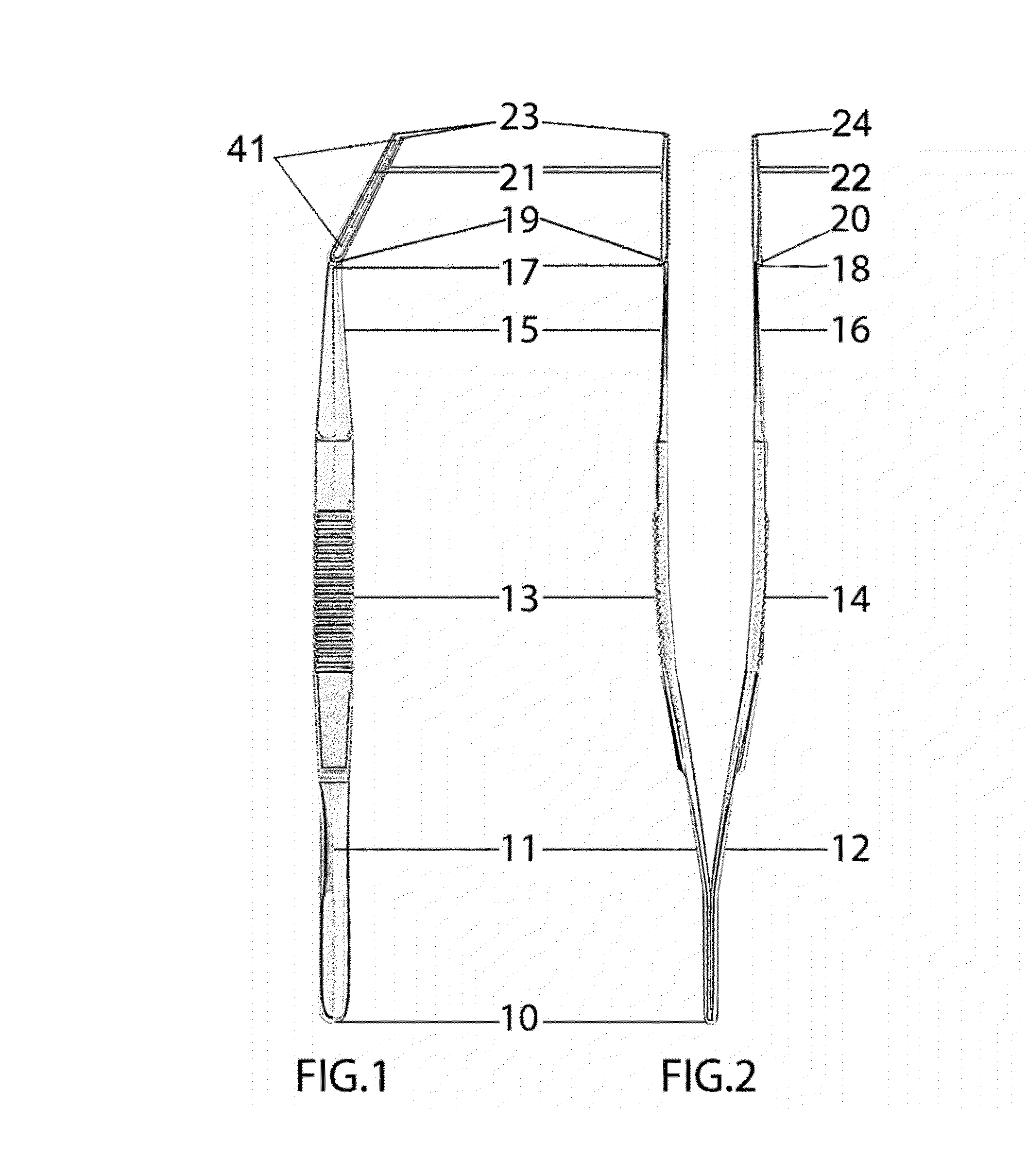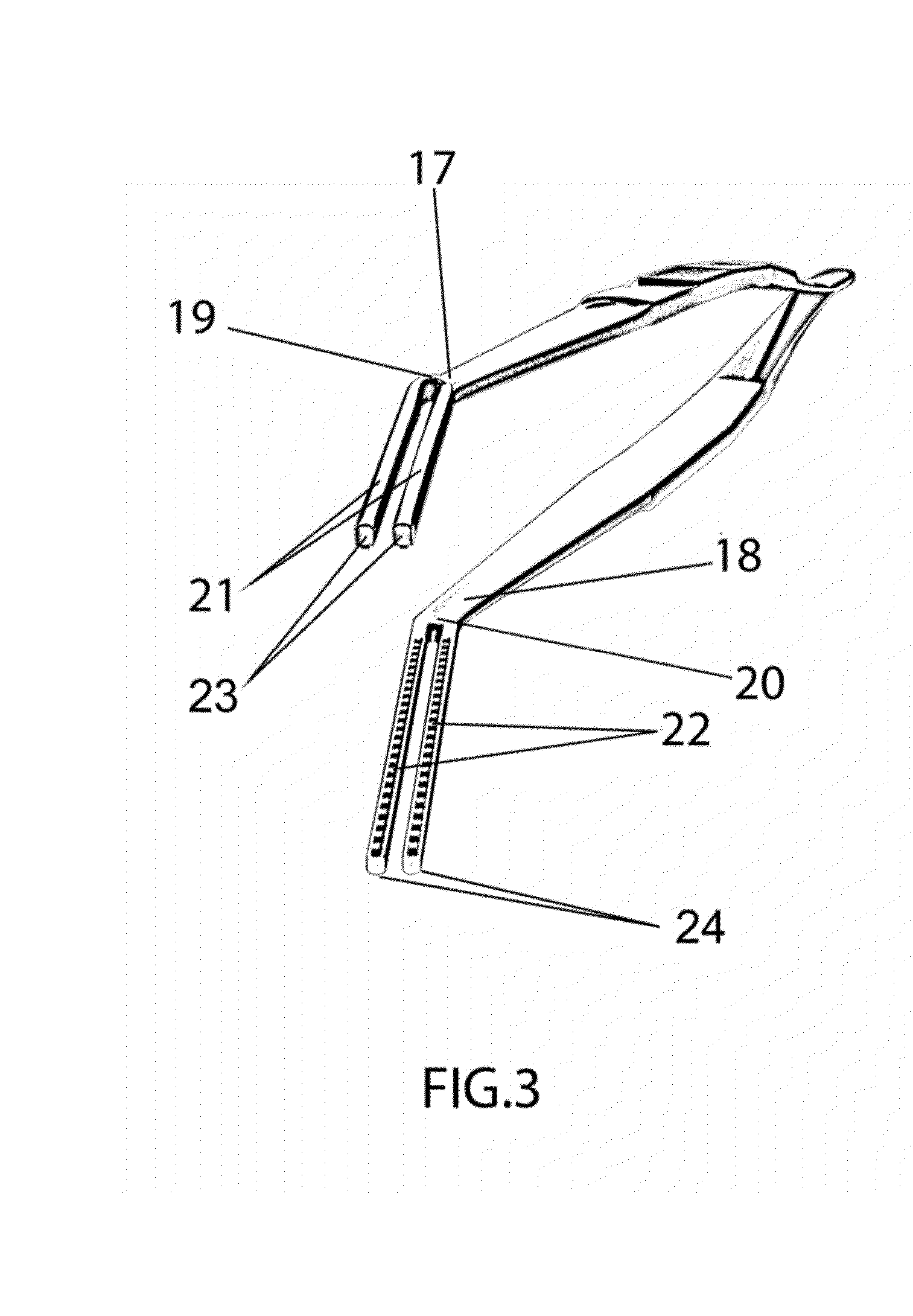Gastrointestinal double-grasp tissue forceps
a tissue forcep and gastrointestinal technology, applied in the field of gastrointestinal double-grasp tissue forceps, can solve the problems of inability to insert the desired right angle cut or needle, inability to place very close sutures, and inability to accept these tiny deviations, so as to improve the speed and quality of the entire procedure, prevent even minor turns, and increase the control of the surgical site
- Summary
- Abstract
- Description
- Claims
- Application Information
AI Technical Summary
Benefits of technology
Problems solved by technology
Method used
Image
Examples
first embodiment
[0009]As shown in FIGS. 1 to 6, the forceps, according to one embodiment of the present invention, is a two-bladed instrument with a handle. The proximal rear ends (11 and 12) join at the back (10). The blades are resilient and biased away from one other. Slight finger compression on the opposing blades engages the jaws (19 and 20), and the prongs (21 and 22) extend from the jaws (19 and 20). The outer surfaces of the blades are knurled (13 and 14) on the middle section to make them easier for the surgeon to grasp. On this middle section, the blades diverge with a mild curvature at the proximal rear ends (11 and 12) and converge toward the distal end (15 and 16), where they finally are connected to the jaws at the blade junction (17 and 18). The obtuse angle created at the blade junction (17 and 18) with the jaws (19 and 20) in the plane view (FIG. 1) is assumed to enable ergonomic handling and a better suture field of view by deviating the surgeon's left hand leftward. In a preferr...
second embodiment
[0019]In another embodiment of the present invention, to manufacture a gastrointestinal double-grasp tissue forceps with the option of Tj>Tp, the prongs taper with a mild slop toward their ends in the side view.
[0020]In another alternate embodiment, when a distance between two consecutive sutures of more than 1.5 mm is desired (for example, n), d1 will be corrected to d1=(2 n)−2, while the other dimensions will remain unchanged.
[0021]In the last alternate embodiment, if the forceps is used for tougher tissues, such as fascia, dura or skin, the gripping surfaces and prong tips are toothed.
[0022]In an alternate embodiment of the invention, the jaws and corresponding prongs are aligned along the blade axis. In other words, the angle at the blade junction (17 and 18) with the jaws (19 and 20) is zero.
PUM
 Login to View More
Login to View More Abstract
Description
Claims
Application Information
 Login to View More
Login to View More - R&D
- Intellectual Property
- Life Sciences
- Materials
- Tech Scout
- Unparalleled Data Quality
- Higher Quality Content
- 60% Fewer Hallucinations
Browse by: Latest US Patents, China's latest patents, Technical Efficacy Thesaurus, Application Domain, Technology Topic, Popular Technical Reports.
© 2025 PatSnap. All rights reserved.Legal|Privacy policy|Modern Slavery Act Transparency Statement|Sitemap|About US| Contact US: help@patsnap.com



